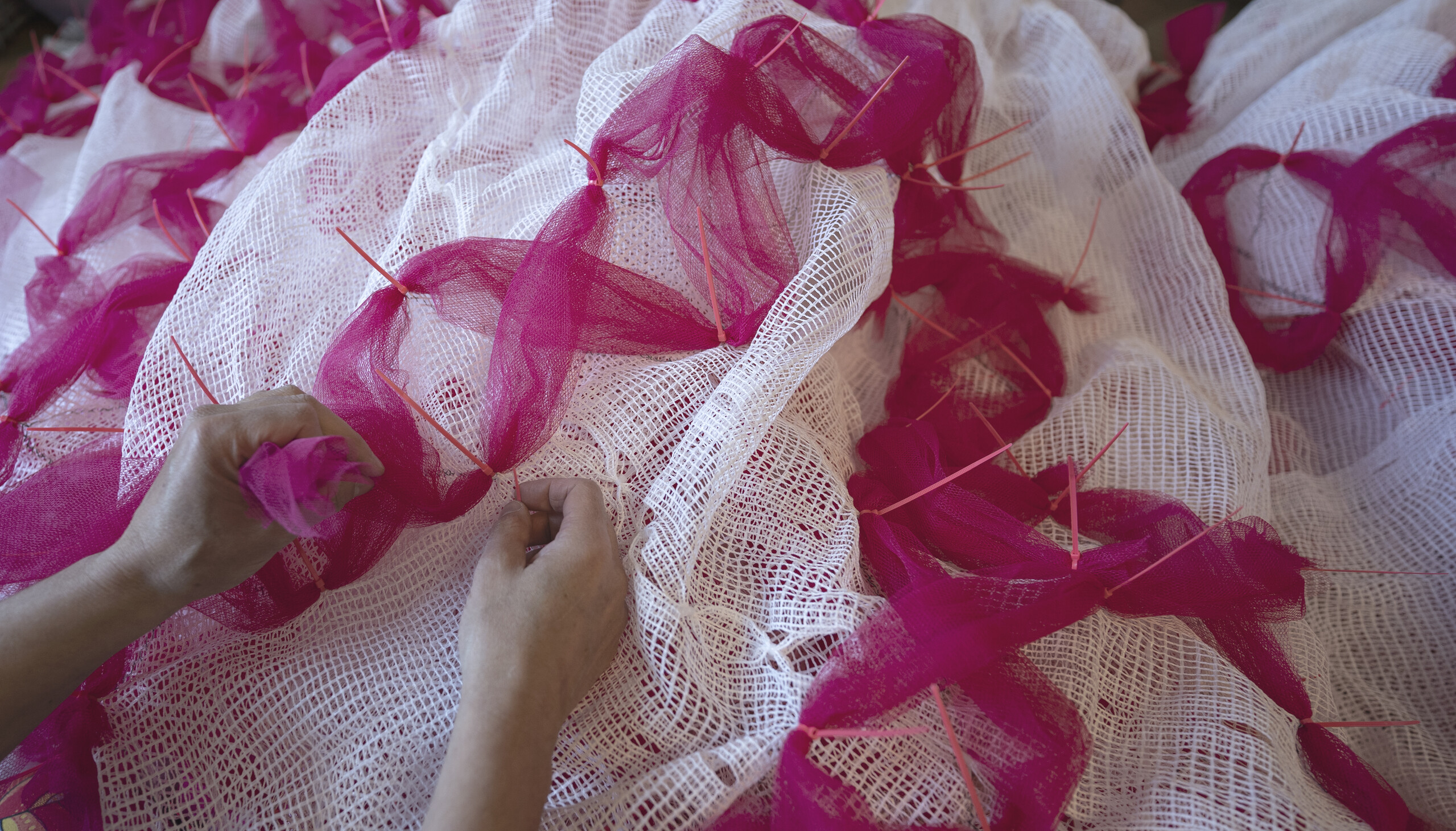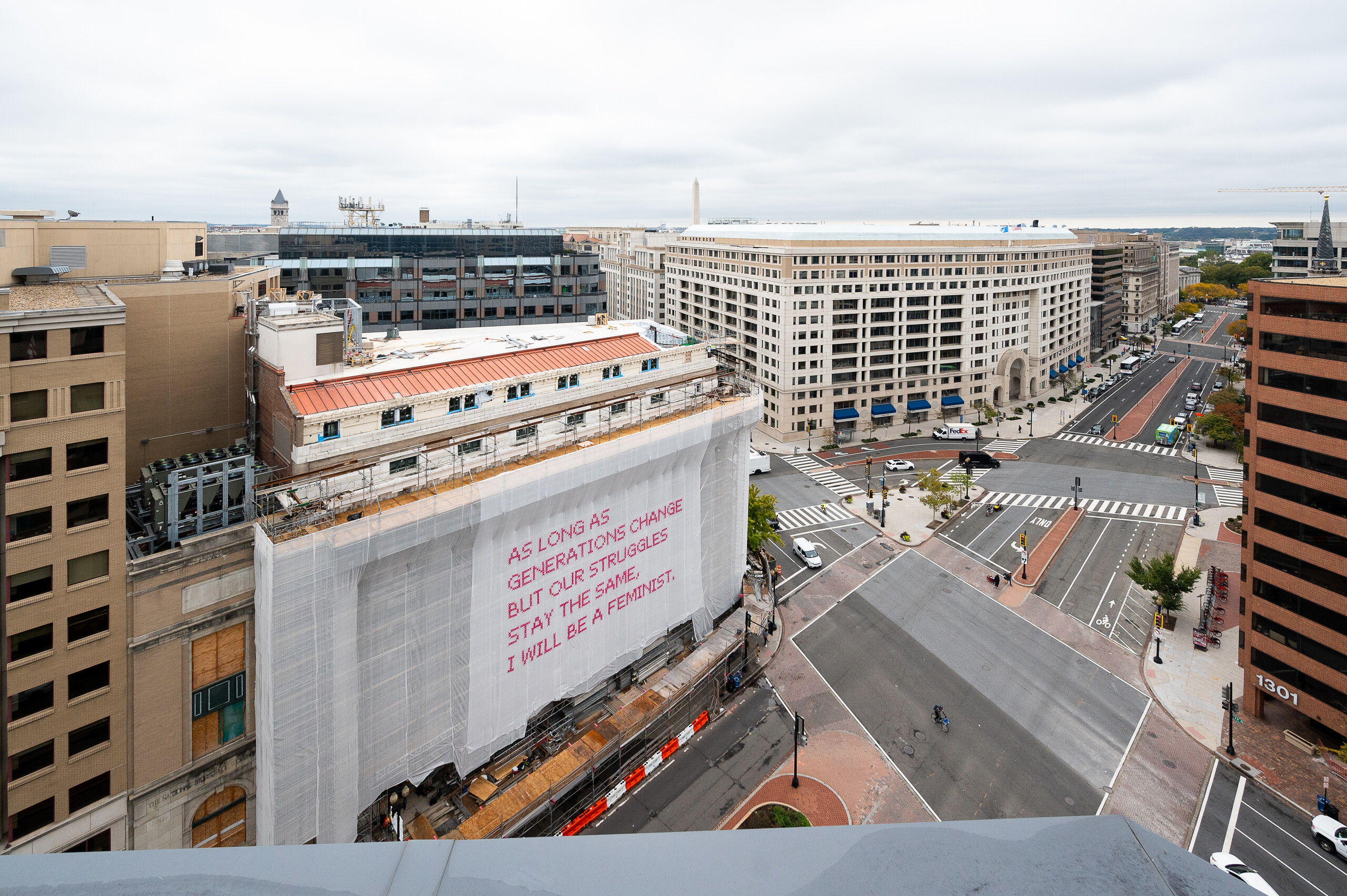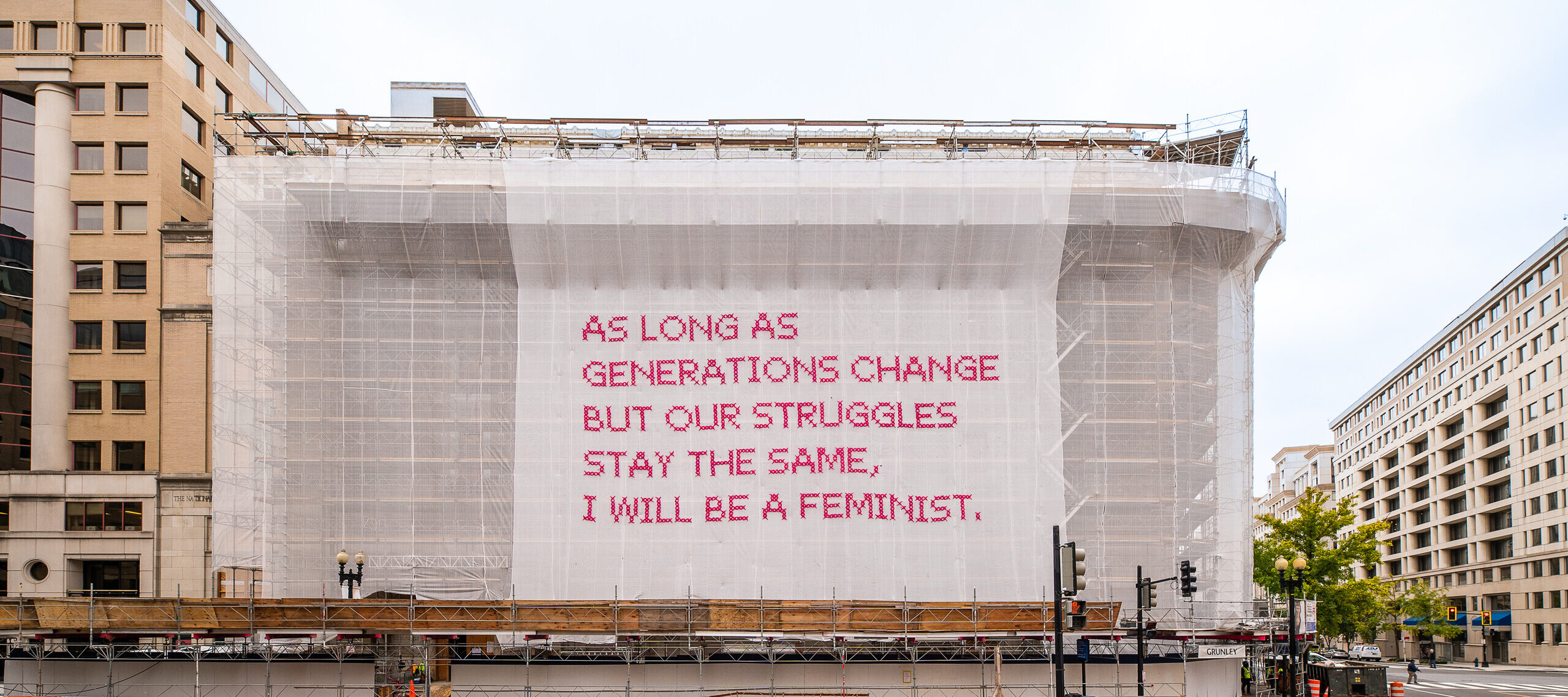With her team, Austrian artist Katharina Cibulka developed the series “SOLANGE” (German for “as long as”) and created a large-scale work now on view on the museum’s façade that reads, “As long as generations change but our struggles stay the same, I will be a feminist.” In this series, monumental nets are cross-stitched with tulle and cable ties on construction scaffolding. Their messages raise awareness and voice the continued need for feminist action. NMWA Exhibition Coordinator Hannah Shambroom spoke with Cibulka about her process.
Hannah Shambroom: Can you describe your artistic background and/or training? What inspired you to become an artist?
Katharina Cibulka: My professional background is film. I’ve always been interested in people and their personal histories and stories. Originally, I wanted to become an ethnologist. I like to listen, ask questions, to explore the energy that lies behind what people say. I love to dive deep into their stories and their impact on the world.
At 29, I began studying art and digital media, performance art, and visual art narratives at the Academy of Fine Arts Vienna and the School for Artistic Photography Vienna. It was such a privilege to study these subjects. Suddenly I was able to reflect everything I had learned, experienced and seen from a new perspective, to recontextualize it. And it allowed me to incorporate everything I had done into my artistic work.

HS: Much of your work is performance and video-based. How did you transition from this digital medium to the much more manual, handwork process of stitching for your “SOLANGE” works?
KC: I’ve been working conceptually for years. I choose the technique and means of expression that I feel best fits the topic or idea. Since I have a filmic background it used to be my go-to choice to express my message with film or alternative documentary strategies. With time, my films and approach became more and more unconventional; traditional documentaries turned into artistic films.
I’m particularly interested in pointing out injustices. I like to hit a nerve, and I like to tell stories that touch people’s hearts. With film and photography I work with reality and create a collage of different themes.
It is my aim to reach as many people as possible instead of staying in my own bubble. I’m also interested in finding a more concise way to express my ideas. How can we convey a message in a single sentence? In an installation? In a sculpture? How can I get people to start reflecting and discussing what they see? These questions all go into the process of finding the most appropriate technique and place.

“SOLANGE” is not only about pointing out gender injustice and inequalities, it is about taking up (a lot of) public space. It is my aim to use the historical practice of embroidery—of women stitching these tiny monograms in the private sphere—to claim highly visible places in public; to speak up and say: we’re here, in the male-dominated space of construction sites. We transform material that is already present—the scaffolding nets—into public feminist art by using a traditionally female-connoted technique. Playing with traditional roles and materials is what makes the project so appealing to me.
